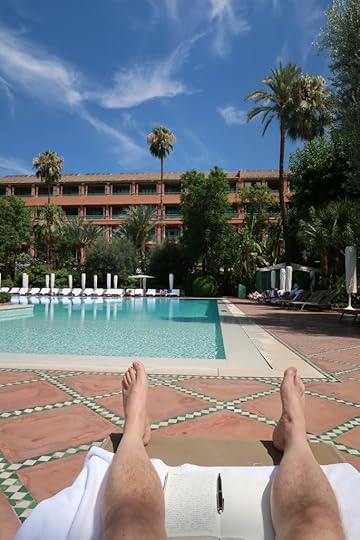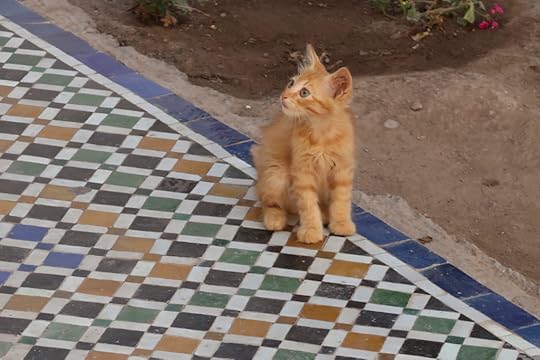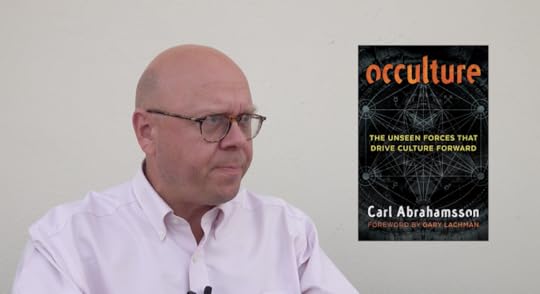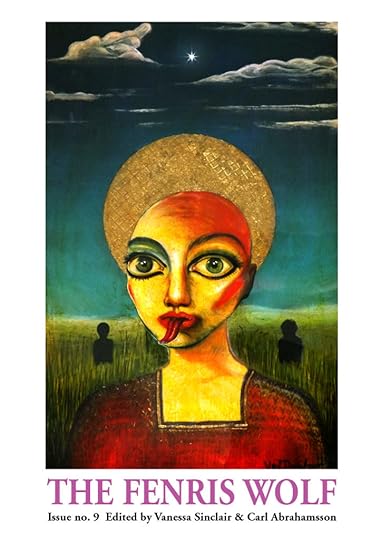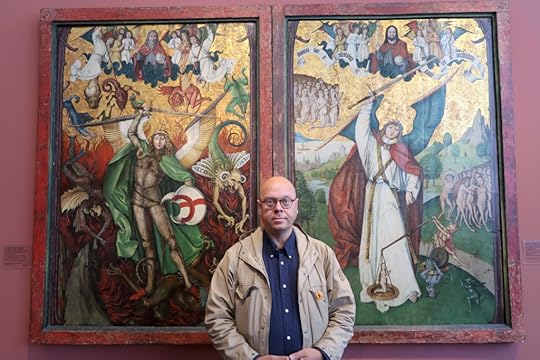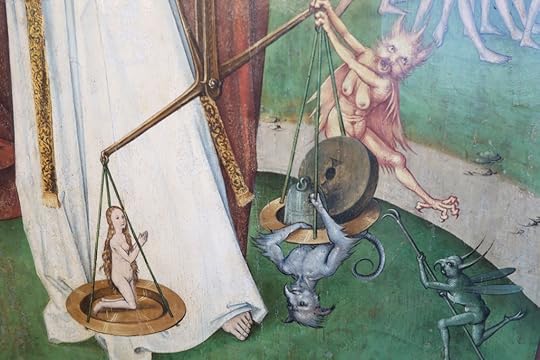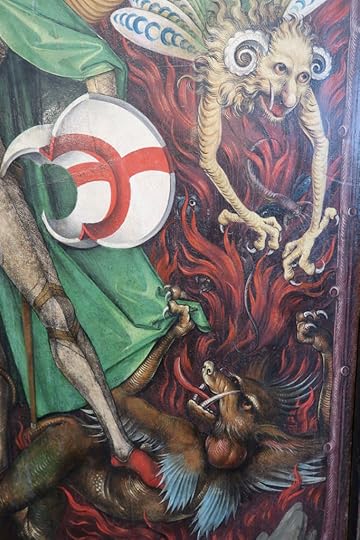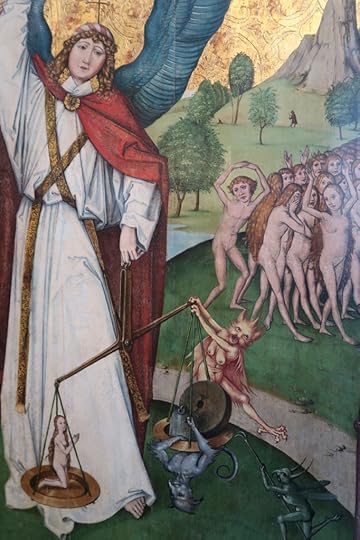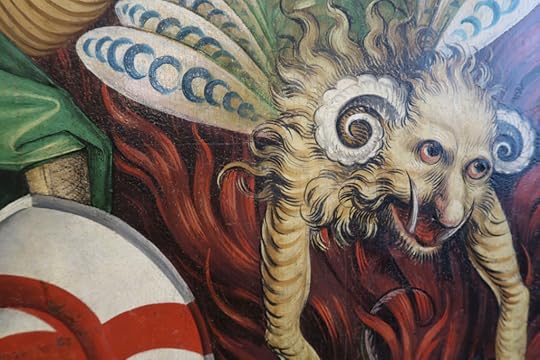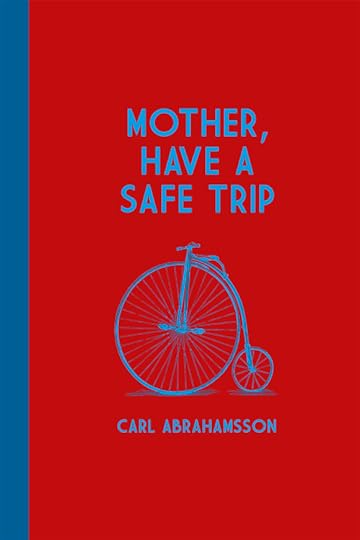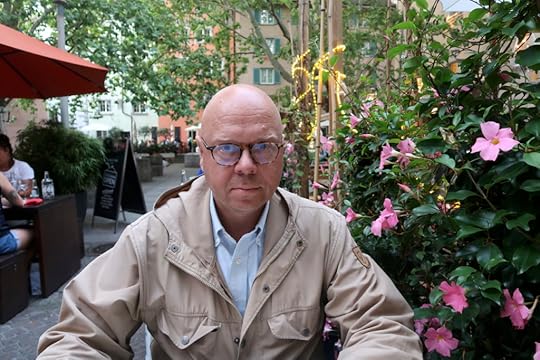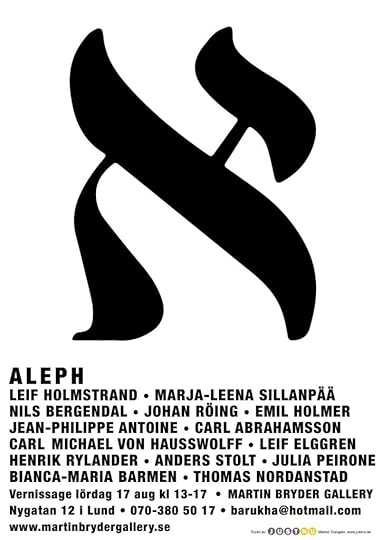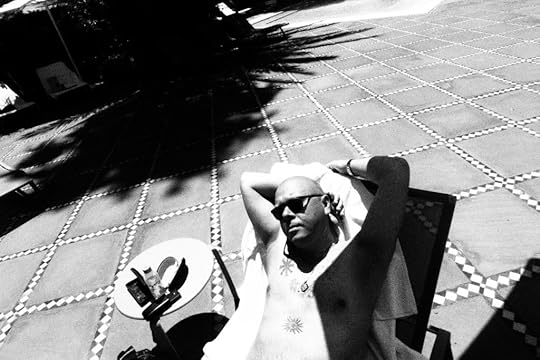Carl Abrahamsson's Blog, page 42
August 26, 2019
Sizzlers in the sun
Tanned bodies used to be associated with health, muscular motion, exercise, outdoors activities and a vital way of life.
Nowadays, it’s usually the opposite. A tan (especially if it’s artificial) is associated with decadence, decay and death drive; a way to celebrate passivity until the point of scorching, and the longed for cellular changes of inevitability.
Fried fat sizzlers… To be seen (or, rather, to be watched) as an affluent pork chop has become the desired norm. The sun is our benefactor, but one that slowly kills its devotees.
Without a doubt, solar suicide has to do with the insight that time is actually up for us human bugs. While we wait for the end, let’s play-act that everything’s fine and as it used to be. And yes, the sun is shining. What a beautiful day!
23 reasons to celebrate
When you have a wide range of interests, you are allowed to also present a big bouquet. But the voice needs to be extra well-formulated – eloquent.
I am very happy to be a writer who is free and not academically confined to the prison cells of formalia and editorial insularity. I guess they serve a purpose: archiving fragments of reality, more or less filtered. Myself, I prefer to roam in that reality proper; indulging in what pleases me the most.
If presented with eloquence, such subjective morsels can actually acquire objective value: as entertainment, as inspiration, as information, etc. But style alone is not enough – there needs to be a genuinely curious mind that filters these initial impressions and turns them into exciting expressions.
Yes, undoubtedly this can be done mainly to please oneself. Creative indulgences based in the “ego” are often more passionate and engaging than any formal attempts at institutionalised “objectivity.”
Everyone fits in somewhere, I guess. I prefer to fit into my own armchair (so far, so good). My own bouquet is lovely and there is much to write about.
August 26th, 2019. “23 reasons to celebrate.”
August 21, 2019
Hey, Carl Abrahamsson, What is Occulture?
Swedish author Carl Abrahamsson talks about his books OCCULTURE – THE HIDDEN FORCES THAT DRIVE CULTURE FORWARD and REASONANCES, and about his many upcoming book projects.
For more information, please visit:
https://www.innertraditions.com/occul…
https://scarletimprint.com/publicatio…
To support this and similar projects, please visit:
https://www.patreon.com/vanessa23carl
A Carl Abrahamsson newsletter (and much more) can be found at:
https://www.carlabrahamsson.com/
August 19, 2019
A great review of The Fenris Wolf 9
Here’s a recent and great review from the excellent site SCRIPTUS RECENSERA, written by Abby Helasdottir.
The Fenris Wolf 9
Adorned with stunning, numinous cover art by Val Denham, this is the latest issue of Carl Abrahamsson’s irregularly published esoteric journal and contains material from the 2016 Psychoanalysis, Art & the Occult conference held at the Candid Arts Centre in London. The Fenris Wolf has come a long way from its first issues, as evidenced by a much-loved copy of the third volume from 1993 in the shelves at Scriptus Recensera: its blue perfect-bound spine now sun-faded to a yellowy grey, pages printed with somewhat erratic toner integrity, and images reproduced with very noticeable halftone dots, as was the style of the time.
As one would expect given the title of the conference, this issue of The Fenris Wolf has a particular focus on the intersection between psychoanalysis and the occult, with art being often the child thereof. Visual artist and writer, Katelan Foisy, kicks things off with an invocation to the spirits and history of the host city, documenting everything in its history, starting with the Roman founding of Londinium, although ending abruptly in the 1960s, as if anything that happened after Swinging London didn’t amount to much. The first essay, Art as Alchemy, proper brings art to the fore with folk musician Sharron Kraus discussing the cliché of the tortured artist, and questioning whether there’s any truth to that conceit. One such alchemical artist is John Balance of Coil, who is considered here by Graham Duff, not for his musical works but rather his considerably lesser known paintings and drawings. This is an affectionate and generous survey of Balance’s, how do you say, naïve oeuvre, with Duff importing a lot of intent and meaning to what in many cases are doodles of, well, doodles.
Given the subject matter, two names that spring up repeatedly within the pages of this volume are Sigmund Freud and Austin Osman Spare, with Carl Jung and David Bowie along for the de rigueur ride. The contrast between the dogmatically pragmatic Freud and the mystical Jung is something mentioned across contributions, with Gary Lachman asking in title and body, Was Freud Afraid of the Occult, and Steven Reisner covering similar ground in On the Dance of the Occult and Unconscious in Freud. Meanwhile, in matters of the spiritual and artistic, Spare is a natural touchstone for Balance in Duff’s piece on him, and he can also be found name-checked throughout this volume. The largest consideration of AOS, though, comes from Robert Ansell of Fulgur Press in Androgyny, Biology and Latent Memory, in which he conversationally talks of themes of the androgyne within Spare’s works, drawing from individual pieces, as well as most notably, The Focus of Life.
The line-up of the Psychoanalysis, Art & the Occult conference, as befits its title, drew on artists, occultists and psychologists; with some lucky presenters like editor Vanessa Sinclair going for the trifecta. Perhaps the most, how you say, clinical account comes from Ingo Lambrecht whose Wairua: Following Shamanic Contours hits closest to this reviewer’s geographical location. Lambrecht discusses the use of Te Whare Tapa Wha as a M?ori model for mental health in which the wharenui of the title is comprised of four supporting cornerstones: tinana (physical), hinengaro (mental), wh?nau (family) and wairua (spirit). Wairua is defined here as being an abyss of unmanifested potential comparable to the Ain Soph in Kabbalah, the notion of Zen, and the Via Negativa of Meister Eckhart. Lambrecht shows how a model such as Te Whare Tapa Wha can sit alongside a more materialist psychological one, allowing for an acknowledgement of the sacred and unheimlich. It is worth noting that this is not the only consideration of things from an Aotearoa perspective and artist Charlotte Rodgers in her Stripped to the Core suggests that growing up in a then-isolated New Zealand gave her a magickal edge of sorts.
The more satisfying contributions in The Fenris Wolf 9 are less the considerations of psychology and psychoanalysis and rather those that focus on art and how that intersects with the latter. This is particularly so in instances where artists consider their own work. In a far too brief piece, ending just as you expect it to go further, Ken Henson discusses what as he refers to as the American Occult Revival in his work, connecting his own processes with nineteenth century mesmerism and spiritualism; though it is largely only a singular piece of work, Miss Maude Fealy as Hekate, that he considers in these far too brief pages. In her Proclaim Present Time Over, Val Denham describes how dreams influence her life and work, both visual and aural, presenting the process, as intimated by the William Burroughs and Brion Gysin inspired title, as a magickal act that draws creativity from the subconscious. This is something also explored by Katelan Foisy and Vanessa Sinclair, who are similarly indebted to Burroughs and Gysin and in particular the use of techniques, such as cut-ups, that tap into magickal creativity by disrupting linear time and narrative. Though it is hard to always tell for sure which of the two collaborators are speaking, Sinclair appears to begin first, giving a thorough discussion of the use of cut-ups, emphasising a psychological paradigm concerned with memory as befits her doctorate in psychology, while Foisy takes a more biographical route, describing a series of events and synchronicities concerning the channelling of Burroughs through creative outputs.
This combination of magickal techniques that incorporate the horological and oneiric makes a claim for the preeminent experiential expression of the occult within these pages, drawing on a heady mix of influences from Burroughs, Gysin and Spare. This makes The Fenris Wolf 9 feel very, well, Fenris Wolf, pulling on the same TOPY, chaos magick, Beats and counter cultural strings that can be seen in the journal’s earlier issues. In addition to the examples provided by Sinclair and Foisy, the use of cut-ups reoccur in Fred Yee’s self-evidently-titled Cut-up as Egregore, Oracle and Flirtation Device, in which he namechecks Sinclair and Foisy as teachers and inspiration, reiterating many of their points and techniques. Similarly, the use of dreams already explored by Denham is appraised again by Derek M Elmore, in what is inevitably another consideration of Spare with Dreams and the Neither-Neither. Here, Elmore looks at the themes of love, sex, obsession, unconscious, dreams and death, comparing Spare’s conceptions of them with those in the published works of Freud.
The ninth volume of The Fenris Wolf is a weighty tome at just under 250 pages, with type set in a small point size serif face, surrounded by large margins and a fairly generous footer. Predominantly text-based, in-body illustrations are limited to a few examples where appropriate, while a section of full page images provide examples of the work of Balance, Henson and Malcolm McNeill. Writing quality is overall high, with the dryness of some contributions (and the tiresome spectre of Freud) being offset by the more interesting, chaos and Beats-flavoured ones.
Published by Trapart
Affluent Speculations
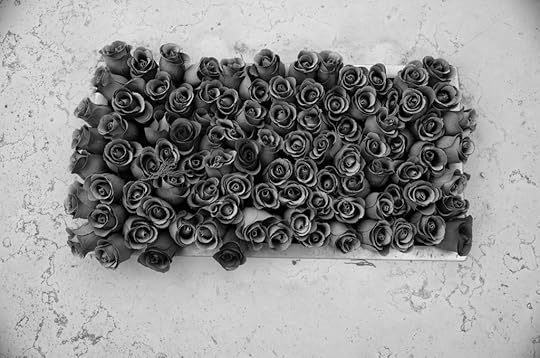
Affluence basically means a flow of choices. We can choose what to do; when, where and with whom. There is no greater luxury. To be king of your own time and space should be the ultimate challenge and goal for everyone.
However, there are many who are content to be controlled, so any competition for said time and space needn’t be as anarchic, chaotic and violent as one could assume.
Also, there’s something to be said for individuation. No one but you can truly and fully be you. Hence the ”competition” for time and space should only be regarded as a general phenomenon; never as specific or individual. Your greatest competitor will always be yourself (and your inherent inhibitions), and that is actually a very good thing.
Now I choose to stop writing. What about you? What will you do?
August 16, 2019
St Michael Lost It
In the beautiful collections of Kunsthaus Zürich rests a powerful four panel painting depicting St Michael’s futile attempts at conquering Lucifer. It’s an exquisite piece of work dating back to 1490, and painted by Hans Leu the older (1460-1507). Its contour-driven style in many ways precedes a cartoonish-like esthetic that fits the theme like hand in glove.
The remarkable thing here is the apparent upper hand of Lucifer and his minions. They’re fun, seem pretty relaxed despite Mike’s aggressions, and definitely evoke a sense of sympathy rather than disgust.
However, this is our own interpretation today. Back in 1490, it may well have been a different story; the archangel was perhaps interpreted as the demagogically desired; as a righteous victor over the forces of ”evil.” Or… perhaps the noble artist actually knew exactly what he was doing when displaying these demons in such a fantastic way. Only the most retarded could ever interpret them as ”evil” or terrifying.
The theme itself is one of the most regurgitated in Christian mythological iconography, and this particular execution is without a doubt a genuine masterpiece. Not only stylistically but also because of this ambivalence of allegiance. St Michael resembles an anxious hysteric more than an angelic-heroic force. His heavenly partners look as if they’re cloned from the same source; they look considerably more like effeminate crossdressers than arbiters of divine justice.
Christ himself looks like a bloated heavy metal singer, whereas God on another panel looks devoid of consciousness altogether. It’s as if Master Leu focused all the intricate details on the infernals. They’re endowed with wings, fangs, horns, feathers, colors, a sense of humor and intelligence and, most of all, an attitude of absolute ”non serviam.”
Judging from our contemporary perspective of esthetics and visual semiotics, Leu’s masterpiece is undoubtedly a big win for Lucifer. The traditionalism of the iconographic structure is simply not enough to convey a sense of victory for the angelic forces.
I strongly suspect the situation was the same in the late 15th century. Leu got away with it simply because he adhered to a form so well-known that no-one could really argue about the strangeness of these vital devils. If people were terrified of his cartoonish monsters it sort of served them right. However, I believe that intelligent and cultured people at the time actually did find them highly amusing, and that these people admired Leu for his audacity in creating a necessary paradigm shift of power through wonderfully subtle ways and methods.
Mother, Have A Safe Trip – The adventure continues…
Just recently, Trapart sold the last remaining copies of my first novel, Mother, Have A Safe Trip. When this book was published in 2013, I was of course overjoyed. I was so proud of that book, and I still am. It’s a swashbuckling and trippy adventure story, and I’ve received a great deal of positive comments from readers all over the world about the book.
Speaking of which… Now that the first edition in English has sold out, I just received the contract for the Polish translation, which will be published in 2020. Wonderful! And that brings to mind the absolute necessity of having it out there in other languages too… German, French, Spanish, Italian, Japanese, Swahili, Klingon, what have you… And of course a new edition of the book in English.
“If you know something, say something!” Do you work for (or are you) an agent, publisher, translator etc, let me know and I can supply a PDF of the book/manuscript – if you don’t have a now extremely rare copy of the sold out first edition!
I hear you asking: “What of novel number 2?” I can only nod in silence, indicating “sooner than you think!” But first, Mother, Have A Safe Trip needs to be out there again in as many languages as possible.
“MOTHER, HAVE A SAFE TRIP: An occult sex thriller set in an international environment. Unearthed plans and designs stemming from radical inventor Nikola Tesla could solve the world’s energy problems. These plans suddenly generate a vortex of interest from various powers. Thrown into this maelstrom of international intrigue is Victor Ritterstadt, a soul searching magician with a mysterious and troubled past. From Berlin, over Macedonia and all the way to Nepal, Ritterstadt sets out on an inner quest. Espionage, love, UFOs, magick, telepathy, conspiracies, LSD and more in this shocking story of a world about to be changed forever.”
”It’s a wonderful read. A lovely book.” (June Newton/Alice Springs, March 24, 2014)
“The dialogues are great. But it’s too short. I wanted more.” (Genesis Breyer P-Orridge, November 2013)
”Carl Abrahamsson’s latest book MOTHER, HAVE A SAFE TRIP is a thrilling roller coaster ride through psychedelic adventures, juicy romantic interludes, metaphoric dreamscapes, high Himalayan yoga enclaves, telepathic portals, 60’s flashbacks, magical constructs, secret government pursuits and many more twists that kept all three of my eyes open. It’s a story that you’ll definitely want to keep non-stop reading which I enthusiastically recommend.” (George Douvris, Links by George, April 10, 2014)
Interested in the e-book?
The Facebook full quota issue
I’m getting a lot of messages from people who want to be friends at Facebook. Honoured and happy! But my friend “quota” there is full, so please LIKE my FB author page instead – it contains more or less the same info/feed, and I’m happy to chat etc via that page:
www.facebook.com/authorcarlabrahamsson/
Also, the best place if you really want to keep up with the antics and adventures of me and Vanessa Sinclair is at:
This is where you find our news first, plus unpublished writing, intimate photos, film clips, exclusive musical tracks, cut-ups, poetry, artwork and enticing dispatches from our travels. Et cetera!
Keep in touch!
August 13, 2019
New group show at Martin Bryder Gallery in Lund
I have a photograph in a group show at Martin Bryder Galler in Lund, Sweden, which opens on August 17th. More information can be found HERE!
August 12, 2019
Mamounia sessions
I really don’t care anymore if anyone sees; if anyone hears; if anyone is prejudiced or has preconceived notions. What exists is simply this pen and this paper making passionate love and being voyeuristically encouraged by me and my mind. Psychic prurience!
We are poolside at the best hotel in the world. Peak life. Yes, it’s the sun itself and the birdsong that create the genuine happiness; not necessarily the outer location. This I’ve known for a long time. Memento Mori. We can’t take any of this with us when we go, but we can certainly leave traces of spaces and places behind for others to take part of. In that lies individual choice; the important esthetic imbued in the curation of life.
Hence one huge incentive for making art. Perhaps the only really valid one: to give life meaning while at it, and hope that it will retain some meaning for future partakers of the past.
The water sure looks wonderful and cooling. ”I think I’ll go for a swim, OK?”
(A very relaxed photo-impression by Vanessa)

